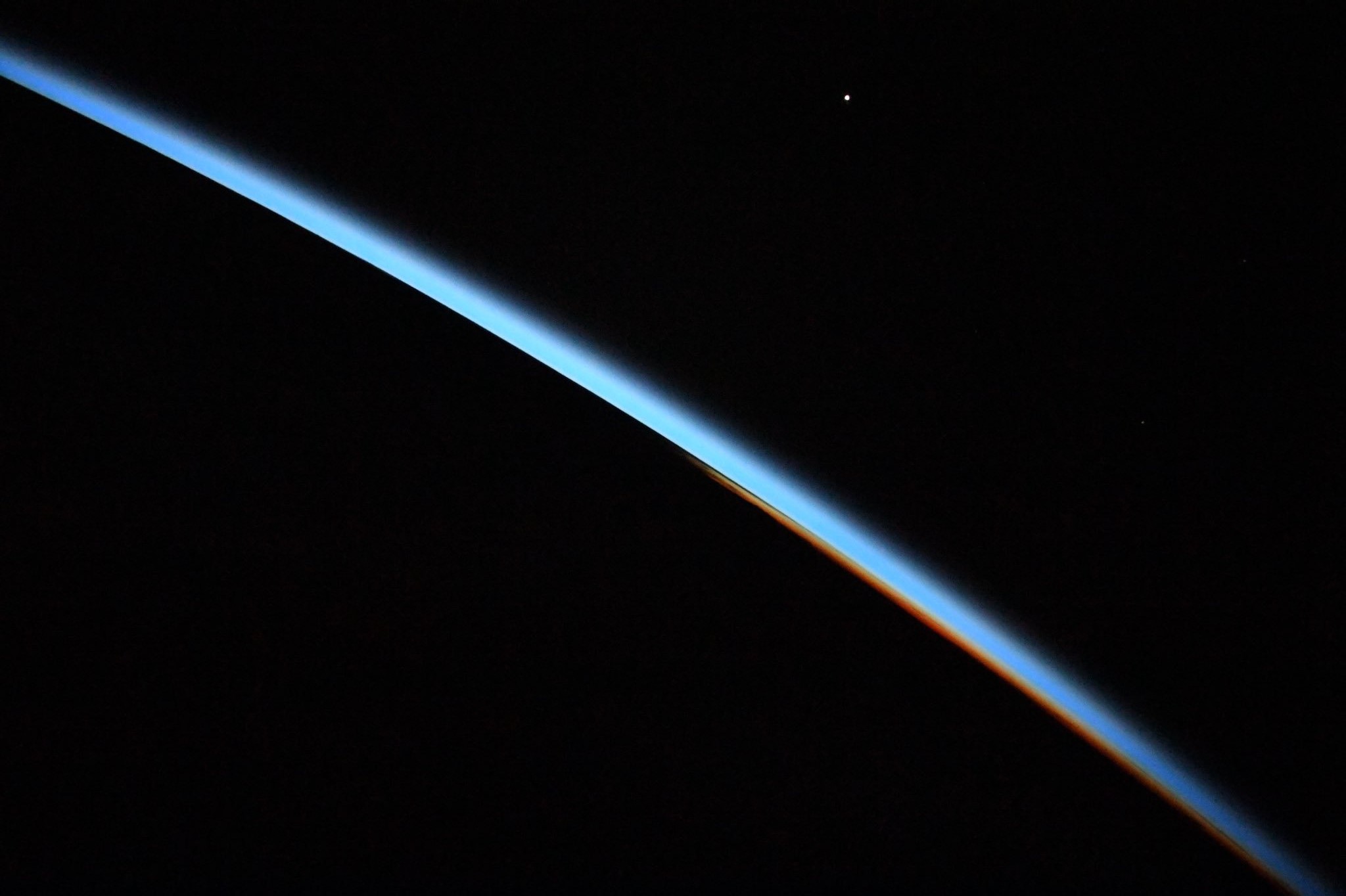[:ja]クリスティーナ・コッシュ宇宙飛行士がISSから撮影した、地球の夜明け越しの金星の出です。

金星は、地球型惑星であり、太陽系内で大きさと平均密度が最も地球に似た惑星であるため、「地球の姉妹惑星」と表現されることがあります。また、太陽系の惑星の中で最も真円に近い公転軌道を持っています。 地球から見ると、金星は明け方と夕方にのみ観測でき、太陽、月についで明るく見える星であることから、明け方に見えるのを「明けの明星」、夕方に見えるのを「宵の明星」と言います。
参考文献: Christina Koch’s Tweet
地球俯瞰画像を見る: LiVEARTH
[Earthview Wonders] No.791: Venus Rise At Sunrise
Astronaut Christina Koch captured from ISS Venus Rise At Sunrise.

Venus is the second planet from the Sun, orbiting it every 224.7 Earth days, and rotates in the opposite direction to most other planets (meaning the Sun rises in the west and sets in the east). It is the second-brightest natural object in the night sky after the Moon, visible to the naked eye in broad daylight. Venus is a terrestrial planet and is sometimes called Earth’s “sister planet” because of their similar size, mass, proximity to the Sun, and bulk composition. It is radically different from Earth in other respects. It has the densest atmosphere of the four terrestrial planets, consisting of more than 96% carbon dioxide.
Reference: Christina Koch’s Tweet
See earthview photo gallery: LiVEARTH[:en][Earthview Wonders] No.791: Venus Rise At Sunrise
Astronaut Christina Koch captured from ISS Venus Rise At Sunrise.

Venus is the second planet from the Sun, orbiting it every 224.7 Earth days, and rotates in the opposite direction to most other planets (meaning the Sun rises in the west and sets in the east). It is the second-brightest natural object in the night sky after the Moon, visible to the naked eye in broad daylight. Venus is a terrestrial planet and is sometimes called Earth’s “sister planet” because of their similar size, mass, proximity to the Sun, and bulk composition. It is radically different from Earth in other respects. It has the densest atmosphere of the four terrestrial planets, consisting of more than 96% carbon dioxide.
Reference: Christina Koch’s Tweet
See earthview photo gallery: LiVEARTH[:]